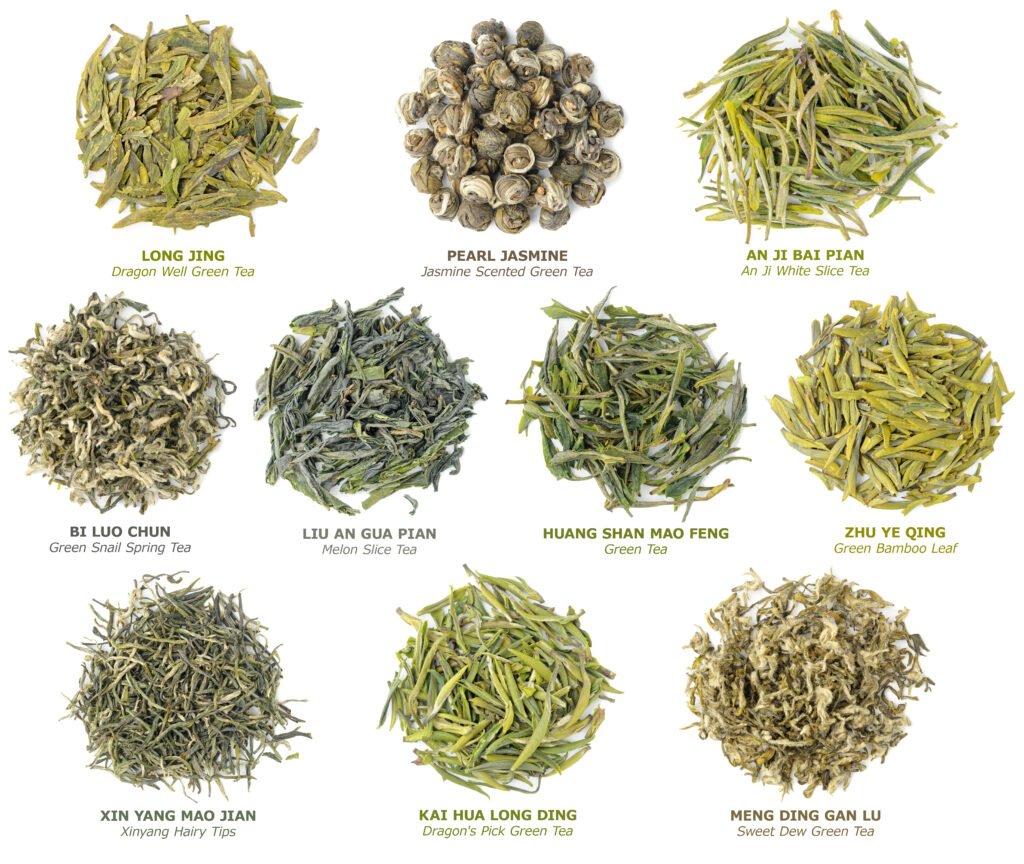About china Tea knowledge
Tea Culture
Varieties of Chinese Tea
There are fifteen major tea-producing provinces in mainland China, and the principle of categorization of Chinese tea combined with the raw materials of fresh leaves, varieties of tea trees, and geographical areas of production, the tea products are divided into green tea, black tea, white tea, yellow tea, oolong tea, black tea, and reprocessed tea.
Black Tea(红茶) gets its name from the red color of its soup. China has a rich variety of black teas, among which Keemun black tea is the most famous. Kung Fu black tea is a unique Chinese black tea variety and is also our traditional export commodity. The four most highly flavored black teas in the world are: Keemun Black Tea, Assam Black Tea, Darjeeling Black Tea, and Ceylon Highland Black Tea.
China’s famous black teas include Anhui Qihong, Yunnan Dianhong, Hubei Yihong, Sichuan Chuanhong, and so on.
Green Tea(绿茶) is one of the most produced types of tea in China, and is unfermented tea (the fresh leaves are spread out to dry and then directly sautéed in a two or three hundred degree hot pan to maintain its green color). Green tea is characterized by high aroma, mellow taste and beautiful shape. China’s green tea varieties of flowers and colors in the world’s first, tens of thousands of tons of exports each year, accounting for about 70% of the world tea market green tea trade.
China’s top ten famous teas:Anxi Tieguanyin, West Lake Longjing, Taihu Lake Biluochun, Huangshan Maofeng, Liu’an Guaipian, Xinyang Mao Jian, Taiping Houkui, Mount Lu Yunwu, Mengding Ganluo, Guzhu Purple Bamboo Shoots tea.
Oolong Tea(乌龙茶/青茶) is also a kind of semi-fermented tea between black and green tea. It has the freshness of green tea and the richness of black tea. Because of its leaves are green in the middle, the leaf edge is red, so it is called “green leaves with red edges”. Oolong tea in the six types of tea process is the most complex and time-consuming, oolong tea brewing method is also very delicate, so drinking oolong tea is also known as drinking kung fu tea.
Oolong tea has the effect of refreshing, eliminating food, stopping dysentery, relieving heatstroke, sobering up and losing weight, etc. It is mainly produced in Fujian, Guangdong, Taiwan, etc., and is generally named after the tea trees in the place of origin, such as Tieguanyin, Dahongpao, Oolong, and Shui Xian, etc.
Yellow Tea(黄茶) In the process of tea making, yellow tea is formed by the stewing of yellow leaves and yellow soup, so it gets its name. The production of yellow tea is similar to green tea, the difference is that there is more than one smothering process. This smothering process is the main feature of yellow tea production method, but also the basic difference between it and green tea.
Dark Tea(黑茶) is post-fermented, named for its dark appearance and undergoing post-fermentation processes. Main varieties like Pu’er tea, produced in regions like Yunnan, are common in compressed forms.
White Tea(白茶) is a specialty of China, mainly made by withering and drying. White tea is excellent in appearance, aroma and flavor. It is processed without frying or kneading, and only the delicate, velvet-filled tea leaves on the back of the leaves are dried in the sun or over a gentle fire, while leaving the white velvet intact. White tea is mainly produced in Fujian’s Fuding, Zhenghe, Songxi and Jianyang counties, and there are several types of white tea, including “Silver Needle”, “White Peony”, “Tribute Eyebrow” and “Shou Mei”. There are a few kinds of “Silver Needle”, “White Peony”, “Gongmei” and “Shoumei”.
These six categories represent the rich diversity of Chinese tea culture, each offering unique flavors and characteristics, showcasing the depth and breadth of China’s tea heritage.
